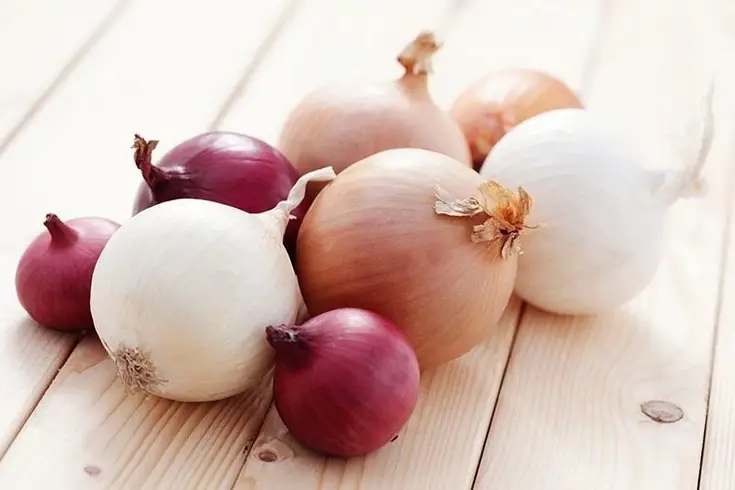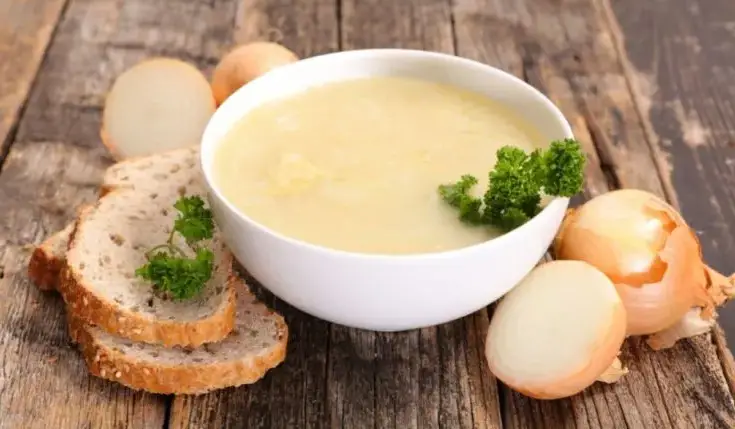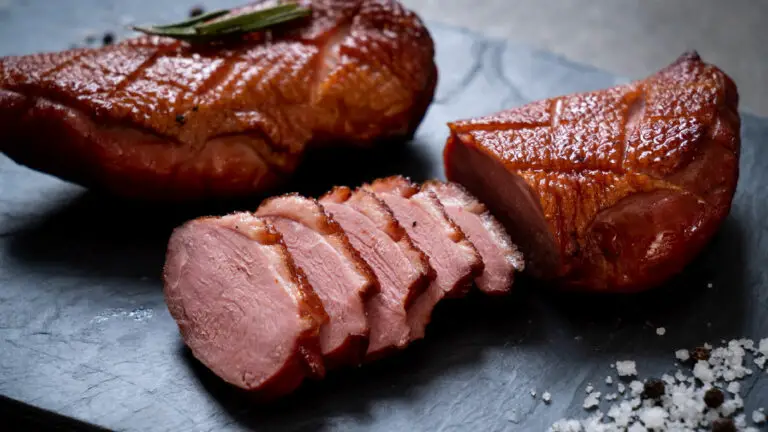Red vs. White Onions: What’s the Difference?

Onions are a key ingredient in many recipes. They are essential to any cooking. Soups, sandwiches, and baked goods all benefit from their distinctive flavor. However, have you ever started wondering why some chefs prefer a certain type of onion for a particular dish?
There is often confusion about the Red Onions vs. White Onions. Red onions are typically smaller than white onions and have redder skin. Both types of onions have almost similar flavors. But there are some key differences, more than the size and taste.
We’ll discuss the many differences between red and white onions in this extensive guide.
Red Onions
Allium cepa is an onion genus that includes red onions. The surface of these onions is reddish-purple, while the inside is largely white with something like a purple outline.
These onions come in a variety of sizes, including small, medium, and big. A variety of methods can be used to eat red onions, ranging from caramelized to sizzling.
White Onion
White onions have a stronger flavor and aroma. They’re from the same family as dry onions.
The inner and exterior of these onions are both white, with a thin outer shell. White onions are used in almost all European and Mexican cuisines.
White onions have a sweeter flavor than yellow onions, despite their similar appearance. Nonetheless, you may cook with them instead of yellow onions.
Differences Between Red and White Onions
While both red and white onions have many similarities, there are also some differences between the two. The following are some of the characteristics that distinguish red and white onions:
Size and Appearance

Red onions have a papery surface and brilliant crimson flesh. Depending on where they are grown, they can reach the size of a golf ball, with some approximating a softball.
White onions are white in color, however, some have an off-white tinge to them.
White onions have a milder texture than red onions, which are crisp and crusty. In addition, white onions are somewhat smaller than red onions.
Flavor
Red onions are sweeter and have a milder flavor than white onions. They are also less pungent, so they are a good choice for people who don’t like the strong taste of dried onions.
It is possible to cook red onions in a variety of ways like caramelized, stir-fried, and simmered.
Red onions lose part of their taste when cooked, as opposed to when eaten fresh. By the look, you may think that onion is bad, but this is not the case. Furthermore, when cooked, red onions have a different flavor than when consumed raw. These onions have a moderate flavor and, based on how long they simmer, give color to a meal.
On the other hand, white onions have a softer flavor than red onions and are slightly sweeter.
Usage in Cooking and Cuisine
Red Onions
Red onions are preferred in most Asian and European nations owing to their distinct flavor and vibrant hues. In Asian countries, they are used to making traditional curries.
Red onions are most commonly used in salads, roasts, and sandwiches. Because the color diffuses throughout the chopped onions, giving them a vivid magenta color, these onions are also frequently used for pickling.
Red onions are our first option when it comes to grilling. They roast well on the grill when cut into wedges, and their internal texture becomes jammy rather than mushy, as white and yellow onions do. They’re also our first option for pickling, which we enjoy doing whether we’re making tacos, pizza, or fried rice.
Sharper and spicier than white onions, you’ll find them fresh in salads like Greek salad or kachumber, or alongside braises that take a long time to cook.

White Onions
White onions have such a strong taste and are commonly used in salads and basic cooking. White onions are often used as a garnish or to add freshness to Central American and Latin cuisines such as enchiladas with cheese and tacos.
White onions may be found in a variety of Mexican and French dishes. White onions, for example, are used in French onion soup.
These have thin, papery skins and, although still sharp, have less of a lasting aftertaste than yellows and reds. We enjoy them in pico de gallo or atop huevos rancheros (they’re very famous in Latin and Central American cuisine), or wherever you need one in a meal and as a garnish (think chili).
You may moderate their flammability even more by slicing one thinly and soaking it in cold water for an hour—they’ll be so delicious you could eat them like a salad. (Okay, that’s a touch dramatic, but the flavor will soften down and you’ll be able to eat a lot more of them.)
Color
The flavonoid quercetin is found in both white and red onions. The outer, dry layers of the onion have a higher concentration of that kind of flavonoid than the interior layers.
The color of red onion is distinctive, with a rich crimson color that creates a pleasing contrast. The red onion has more quercetin than the white onion, making it more vibrant. However, in rare situations, they can stain light items like eggs, potatoes, and beans, turning them a bluish-gray appearance.
Antioxidant Possessions
Red onions, on the whole, have a greater concentration of antioxidants. White onions have a lower total flavonoid content, whereas yellow onions are in the center. When it comes to flavonols, red onions have 415 to 1917 mg compared to yellow onions’ 270 to 1187 mg.
Quercetin, a polyphenol component, is one of the most beneficial substances found in red onions. Free radical scavenger Quercetin is a strong chemical that is excellent for the body’s health.
Nutritional Contents
In terms of calories, there isn’t much of a difference between red onions and white onions. Onions are low in calories in general, thus any kind may be safely included in a diet. Both forms of onions have almost the same nutritional profile. Both are high in fiber and other nutrients like as flavonoids, Vitamin C, calcium, phosphorus, and potassium.
Anthocyanins, which give red onions their color, are also more concentrated in red onions. At least 25 anthocyanins were discovered in red onions.
Conclusion
In conclusion, white and red onions are not only different in color, but also in flavor, texture, and usage.
White onions are favored in general cooking, sandwiches, and salads, whereas red onions are widely used in pickling, grilling, and salads.
The sort of onion you use will depend on the flavor and color you’re going for in your dish. Whether you’re looking for a mild onion for a salad or a strong onion for a soup, there’s a type of onion for you.






